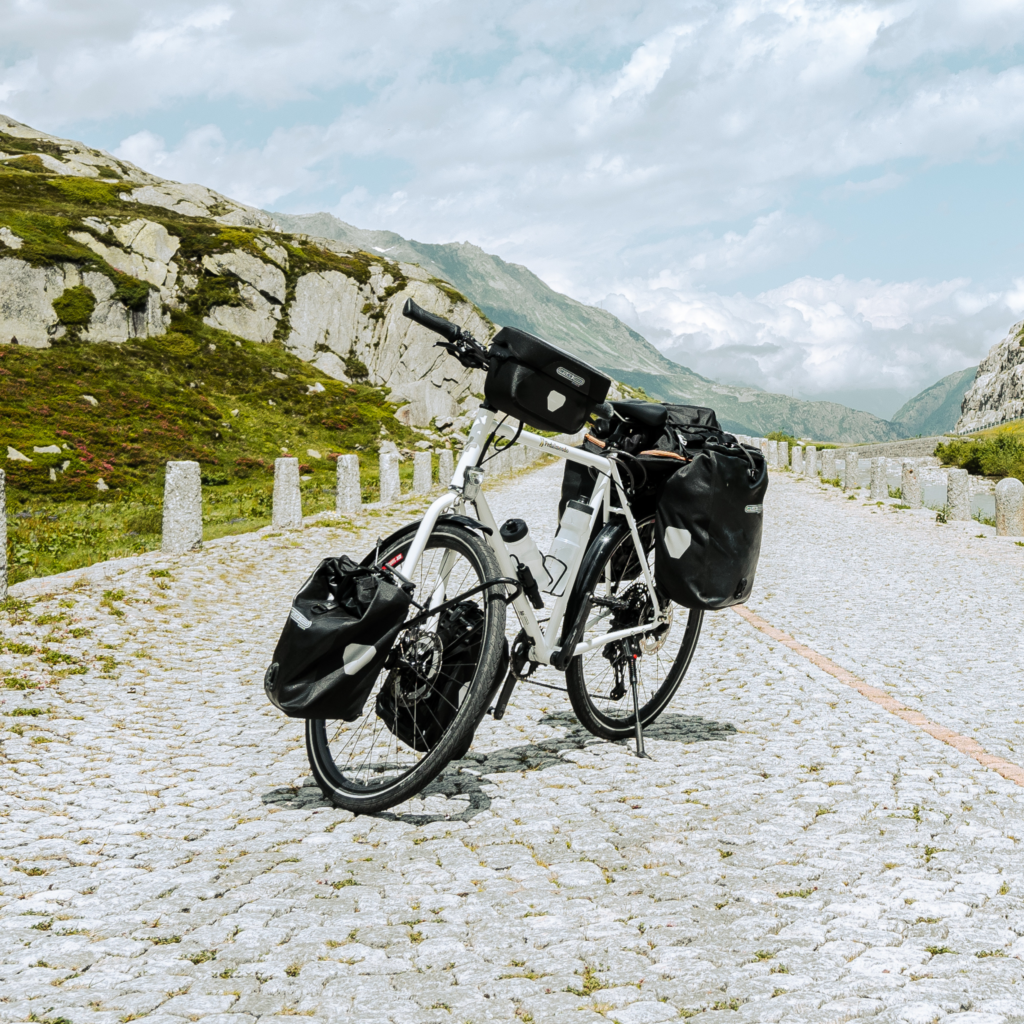What is a touring bike? - The big comparison: touring bike vs. city bike
What is a touring bike? The world of cycling is diverse and offers the right model for every type of rider. But what are the differences between a touring bike and a city bike? Which bike is better suited to your needs? This comprehensive comparison highlights the seven key differences and explains why a touring bike is the better choice in many cases - especially for people who value adventure, versatility and durability.

1. area of use and purpose: long distance vs. short distance
A city bike is specially designed for urban use. It is ideal for short distances in the city, such as the daily commute to work, shopping or visiting friends. The focus is on comfort and easy handling on flat, urban terrain.
The touring bike, on the other hand, is designed for longer distances and a wide variety of terrain. Whether you want to ride through hilly landscapes, over gravel roads or along well-maintained cycle paths - a touring bike offers the flexibility to take you anywhere. It is designed to offer you maximum comfort, safety and endurance on cycle tours or long-distance rides. Touring bikes, such as the models from “Tour de Suisse” or “MTB Cycletec”, are designed for stability and durability and offer ideal riding comfort with their high-quality equipment.
2. frame and geometry: stability vs. agility
A major difference between touring bikes and city bikes lies in the frame geometry. City bikes are often more compact and offer an upright riding position. This is ideal for keeping an overview in city traffic and ensures comfortable riding on short distances.
The touring bike has a more robust and stable frame, which has been specially developed for long distances and high loads. The frame geometry ensures a slightly forward-leaning riding position, which enables better power transmission and more control on long rides. This design helps the touring bike to perform reliably even with heavy luggage and on demanding routes. With robust components such as the Tubus Cargo carrier, it offers enormous load capacity and stability.
3. comfort and ergonomics: long-term comfort vs. short-distance comfort
City bikes are designed for short, comfortable rides. They often have wide, soft saddles and ergonomically shaped grips that ensure comfort over short distances.
In contrast, touring bikes are designed to offer maximum comfort over long distances. The saddles are ergonomically adapted so as not to cause pain even after many hours in the saddle. The handlebar position allows for a flexible riding position, which relieves strain on long distances. Good tires, such as the Schwalbe Marathon Plus tires, ensure exceptional durability and puncture resistance.
4. equipment and accessories: versatility vs. minimalism
While city bikes often get by with minimal equipment for everyday urban use, touring bikes offer a wide range of mounting options for accessories. Touring bikes are usually equipped with pannier racks, mudguards and holders for water bottles. They also offer numerous attachment points for additional bags, tools and other equipment that are indispensable on long tours.
This versatility makes the touring bike the ideal companion for trips and adventure tours where you need to be prepared for different weather conditions and changing requirements. Whether it's a tent, sleeping bag or provisions - the touring bike offers you enough space and stability to transport everything safely.
5. robustness and longevity: long-term investment vs. short-term use
City bikes are generally designed for daily use in the city and are therefore designed for durability in an urban environment. They are robust enough for everyday use, but not necessarily for extreme conditions or prolonged stress when traveling.
A touring bike, on the other hand, is built to last. It is resistant to the challenges posed by long distances and changing types of terrain. High-quality materials, robust frames and durable components ensure that a touring bike will provide years of faithful service - even under extreme conditions.
6 Ride and handling: control vs. maneuverability
City bikes are designed for fast, agile riding in the city. Their compact design enables tight bends and fast maneuvers in dense city traffic. They offer excellent control at low speeds and on flat roads.
The touring bike, on the other hand, is designed for a stable and safe ride over long distances. Its design ensures that it is easy to control even at higher speeds and on challenging terrain. The weight distribution and frame geometry offer a smooth ride, which is particularly effective on long, straight stretches and hilly terrain. However, the following is also important for stable handling
Who is a touring bike the right choice for?
While city bikes are perfect for commuters and people who mainly move around in an urban environment, touring bikes are aimed at a different target group. People who prefer a touring bike are usually looking for a bike that offers them maximum freedom and flexibility. They appreciate adventure, love to explore nature and place great value on sustainability.
Conclusion: Why the touring bike can be the better choice
If you're asking yourself, “What is a touring bike?” and why it might be the better choice for you, the answer lies in its versatility, robustness and the unique features that set it apart from a city bike. While city bikes are unbeatable in the city, a touring bike offers the perfect combination of comfort, stability and flexibility for long distances and varied terrain.
Knowing that a touring bike is a long-term investment, we at Pedalmondo offer you the opportunity to rent a high-quality touring bike from “Tour de Suisse” that is specially tailored to your needs. Our models are not only available in different frame sizes, but also offer top components such as Shimano XT 12-speed gears and robust Schwalbe Marathon Plus tires. So if you're ready to explore the world or Switzerland on two wheels, our Touring Bike the perfect choice for your next adventure.
